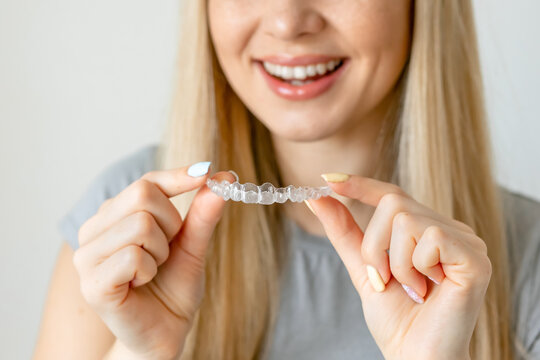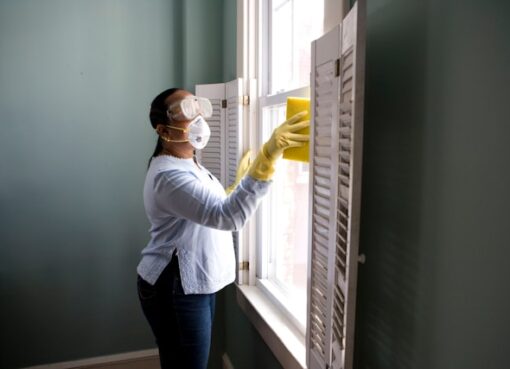The Right Way to Clean Your Aligners (And Mistakes You Should Avoid)

Clear aligners have revolutionized orthodontics. They’re subtle, convenient, and more comfortable than traditional braces—but like any dental tool, they only work well if they’re properly cared for. One of the biggest questions patients ask is how to clean their aligners correctly without damaging them.
And it’s a good question—because a lot of people unknowingly use the wrong methods. For example, some assume toothpaste is the go-to choice. But can you actually use toothpaste to clean aligners? As we’ll explore, that common habit might be doing more harm than good.
If you’re wearing Invisalign or any other clear tray system, here’s what you need to know to keep your aligners clean, clear, and effective throughout your treatment.
Why Cleaning Aligners Is Not Optional
When you wear aligners for 20–22 hours per day, they act like a barrier between your teeth and the outside world. That means:
-
Saliva, food particles, and bacteria get trapped easily
-
Bad breath becomes more common if you don’t clean properly
-
Aligner trays can become cloudy, stained, or even smelly
-
You increase your risk of cavities or gum inflammation
Remember, you’re inserting and removing these trays multiple times a day—so every time you skip cleaning, you’re giving bacteria a chance to multiply. Daily hygiene isn’t just about looks—it’s about your overall oral health.
Mistake #1: Using Toothpaste
This is by far the most common mistake. Toothpaste is made for cleaning enamel—not plastic. Most toothpastes are abrasive, meaning they scrub away stains on your teeth by using small particles. But those particles can scratch the surface of your aligners, leaving tiny grooves where bacteria can hide and multiply.
Over time, those scratches also make your aligners appear foggy, dull, and dirty—even when you’ve just cleaned them.
If you’re wondering more about this, Celebrate Dental breaks it down in detail here: Can I use toothpaste to clean my aligners?
Mistake #2: Using Hot Water
Heat and plastic don’t mix well. Even slightly hot water can warp your aligners, affecting how they fit—and in turn, how effectively they move your teeth. Always use lukewarm or cool water when rinsing or soaking your trays.
Mistake #3: Leaving Aligners in the Open
You should always store your aligners in their case when they’re not in your mouth. Leaving them on the bathroom sink, in a napkin, or inside a purse or backpack is an open invitation for bacteria, dust, or worse—loss or damage.
Mistake #4: Skipping Cleaning Altogether
Some people just rinse their trays with water and call it a day. Unfortunately, this isn’t enough. Water alone doesn’t remove plaque or prevent odors. It’s like rinsing your mouth without brushing—it doesn’t get the job done.
So, What’s the Right Way to Clean Clear Aligners?
Here’s a dentist-recommended routine to follow daily:
🧼 1. Use a Mild, Clear Liquid Soap
Liquid dish soap or antibacterial hand soap (unscented, without color) works well. It cuts through buildup and doesn’t damage the plastic.
-
Add a drop to a bowl of lukewarm water
-
Use a soft-bristle toothbrush to gently clean inside and outside the trays
-
Rinse thoroughly with cool water afterward
🪥 2. Brush Gently with a Separate Toothbrush
Don’t use the same toothbrush you use for your teeth. Keep a soft one specifically for your aligners to avoid cross-contamination and hard brushing.
💧 3. Rinse After Every Meal
Even if you don’t do a full clean each time, rinse your trays with cool water before putting them back in. This prevents dry buildup and food particles from getting trapped.
Optional: Deep Cleaning Options (Once or Twice a Week)
If you want to keep your aligners sparkling, you can also add a weekly soak using:
-
Aligner Cleaning Crystals (like Invisalign brand)
-
Retainer tablets available at pharmacies
-
Baking soda and water solution (natural and safe)
-
Hydrogen peroxide and water (equal parts, soak for 15–20 mins max)
Avoid using mouthwash or vinegar, as both can discolor or damage your trays.
Pro Tip: Clean Your Teeth Before You Put Aligners Back In
Even if your aligners are clean, placing them over dirty teeth defeats the purpose. Always brush and floss after meals before wearing your trays again. Otherwise, food and bacteria get sealed in—raising your risk for decay and gum problems.
Aligner Smell? Here’s Why It Happens
A common complaint is that aligners begin to smell bad, especially after the first week. Here’s why that happens:
-
Bacteria gets trapped in scratches caused by improper cleaning
-
You’re not rinsing after eating or drinking
-
Trays are stored improperly (e.g., exposed to air or moisture)
-
You’re not brushing your teeth thoroughly before reinserting trays
All of these problems are preventable with good habits. And when in doubt, reach out to your orthodontic provider for help.
Celebrate Dental & Braces: Helping You Keep Your Smile on Track
At Celebrate Dental & Braces, we don’t just hand out aligners—we guide patients through every step of the journey. We educate you on how to clean your trays, protect your teeth during treatment, and avoid costly mistakes that could slow down your progress.
We understand that life gets busy, so our advice is always simple, clear, and easy to follow. Our goal is to help you get the best results with the least stress—whether you’re a teen starting treatment or an adult transforming your smile.
Final Thoughts: Clean Aligners, Better Results
Aligners are a powerful tool—but only if they’re cared for properly. Treat them with the same respect you give your teeth, and they’ll work efficiently, stay invisible, and help you avoid problems along the way.
Skip the toothpaste. Skip the shortcuts. Stick to safe methods and make it part of your daily routine.
It’s the little things—like how you clean your trays—that make the biggest difference in your smile journey.






Leave a Comment